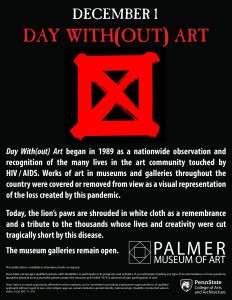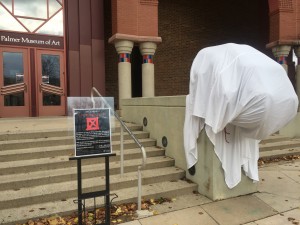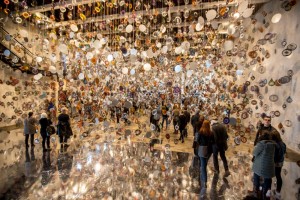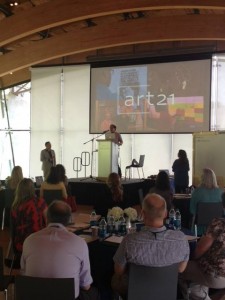
Photo caption: Dr. Kletchka in the Drs. Albert and Lorraine Kligman Print and Drawing Study Room with 2015 SICA participants Julia Nelson, Sheryl Depp, Jan Riggio, Misty Hoover, and Austin van Allen. A regular participant in SICA, Ms. Hoover passed away unexpectedly this summer.”
From art museum education, to studio experience, to educational practice, and the evolving disciplines of child and youth culture, to histories of art education, and arts-based research, there are many facets to an Art Education degree in Penn State’s School of Visual Arts.
Classrooms are only one of many spaces where art education happens—art museums are another. Art museum educators facilitate connections between community members and works of art through opportunities for interpretation and engagement, helping make it possible for people to experience art in ways that are personal, meaningful, and relevant. If you have ever visited a museum with your school; attended a lecture, gallery conversation, or performance; made a project in a class or workshop; or read/listened to gallery guides, chances are an art museum educator was involved in your experience.
“As a practicing art/museum educator and scholar, I am interested in the spaces where theory and practice intersect,” said Dana Carlisle Kletchka (’10 Ph.D.), curator of education at the Palmer Museum of Art and affiliate assistant professor of art education. “Specifically, I consider the ways in which professional development (PD) for art teachers is conceptualized and carried out in the art museum context and ultimately how PD may form communities of practice for art museum educators and teachers, how teachers implement their understandings in their classrooms, and how such experiences change participants’ pedagogical understandings and strategies.”
Carlisle Kletchka says she is also interested in unpacking the historical, social, political, and identity-based discourses that shape the field of art museum education—specifically the positionality of art museum educators and visitors within institutional contexts—as art museums experience a vast paradigmatic shift. “Lastly, I am interested in investigating ways in which social media, digital devices, and three-dimensional fabrication are changing the nature of interpretation and engagement in art museums,” she said.
Kelsey Rieger, Masters student in the Art Education program, came to Penn State in order to broaden her understanding of how the arts can inform and expand our opportunities for learning outside of the traditional classroom setting, and was specifically interested in the contributions of the Palmer Museum of Art to the University Park campus and State College at large. “Working both professionally and academically with museum experts like Dr. Carlisle Kletchka is proving to be an invaluable opportunity,” said Rieger. “During my time in the Penn State Art Education program I am hoping to better situate my practice as a museum educator within the larger context of art education in order to continue addressing the needs of my community through public arts institutions.
To learn more about Penn State School of Visual Arts’ Art Education program, visit sova.psu.edu/arted.










